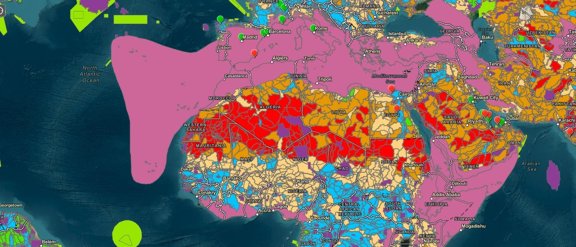WE INNOVATE
Introduction
Our commitment to the biodiversity protection
Technip Energies, a leading engineering and technology company for the energy transition, has long been committed to the principles of sustainability and environmental stewardship. Today, we are proud to share our ongoing commitment to biodiversity and the meticulous processes we employ to assess and mitigate risks to natural ecosystems.
Challenge
We are committed to minimizing our adverse impacts on biodiversity, protected areas, and areas of significant biological value at or near all our offices and operational sites. We endeavor to minimize our environmental footprint, conserve natural habitats, and protect and restore ecosystems.
As part of our commitment to biodiversity, we have integrated in our ESG Scorecard a strong objective related to our pledge of not participating in any new projects which would be in areas defined as categories I and II by the International Union for Conservation of Nature (“IUCN”).
Technologies
Biodiversity strategy and risk assessment
Our approach to biodiversity management is exhaustive, encompassing all project phases from inception to completion. We recognize that biodiversity loss is driven by factors such as change in land and sea use, over-consumption of natural resources, climate change, pollution, and invasive species. In response, we aim at managing the environmental impacts of our sites and activities according to the mitigation hierarchy principle of avoidance, minimization and restoration, adhering to stringent guidelines that complement local environmental regulations.
Our biodiversity management procedure outlines the framework for developing project-specific biodiversity management plans, ensuring that all Technip Energies entities, operations for our clients, and services operate in harmony with local ecosystems.
Our biodiversity risk assessment methodology is based on two steps:
- Global approach: locate and rate from ‘low’ to ‘extreme’ all our prospects and sites risk, as per their distance to recognized sensitive areas (protected areas, key biodiversity areas, and biodiversity hotspots) and the type of activities conducted on site.
- Local approach: finetune the risk analysis of the sites while they are active using a range of biodiversity indicators.
Solutions
In 2024, Technip Energies launched its internal tool B.WaRe.
It is a biodiversity and water risks assessment software based on a Geographic Information System (GIS). B.WaRe allows our teams in less than 30 seconds to assess the level of biodiversity and water stress risks at a given location and learn the global ecological zones as well to which it belongs. Users can perform live score calculations, spatial analysis to identify high-risk biodiversity areas, display charts, and statistics.
In line with our commitment, Technip Energies has pledged to avoid undertaking projects in locations classified as IUCN management categories I and II, areas recognized for their high conservation value. This decision reflects our proactive stance in not just managing but avoiding biodiversity risks.
Technip Energies remains steadfast in its commitment to driving sustainable change, upholding the highest standards of safety and integrity, and leading the charge towards a more balanced and resilient world. Join us as we continue to innovate and implement practices that protect and maintain the natural environments where we operate.
